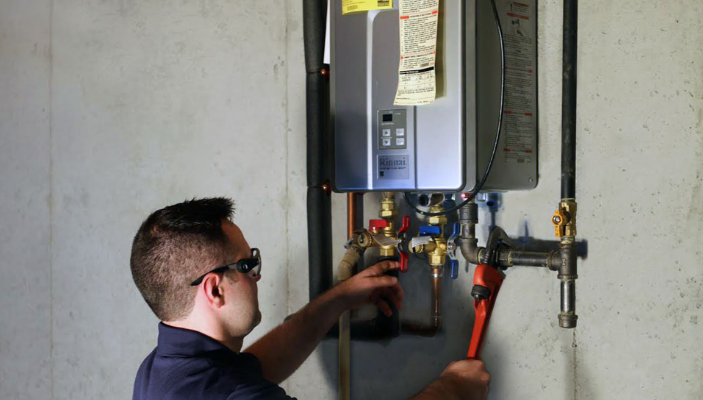Essential Tips on Maintaining Your Home's Hot Water SystemEffective Techniques for Maintaining Your Home's Hot Water SystemWays to Prolong the Lifespan of Your Home's Hot Water System By Maintenance
Essential Tips on Maintaining Your Home's Hot Water SystemEffective Techniques for Maintaining Your Home's Hot Water SystemWays to Prolong the Lifespan of Your Home's Hot Water System By Maintenance
Blog Article
The article author is making a few great points relating to Water Heater Maintenance Tips You Can't Afford to Forget in general in this content underneath.

Warm water is vital for daily convenience, whether it's for a rejuvenating shower or cleaning recipes. To ensure your hot water system runs effectively and lasts longer, routine maintenance is crucial. This write-up provides practical suggestions and insights on exactly how to maintain your home's warm water system to stay clear of interruptions and expensive repair services.
Introduction
Maintaining your home's warm water system could seem challenging, but with a couple of basic steps, you can guarantee it runs efficiently for many years to find. This guide covers whatever from comprehending your warm water system to do it yourself maintenance pointers and recognizing when to call in professional assistance.
Value of Maintaining Your Warm Water System
Regular upkeep not only prolongs the life-span of your warm water system yet additionally guarantees it operates efficiently. Ignoring upkeep can result in reduced performance, greater energy costs, and also premature failing of the system.
Indicators Your Warm Water System Requirements Maintenance
Knowing when your hot water system requires interest can stop major issues. Look out for indicators such as irregular water temperature, strange noises from the heating unit, or corroded water.
Flushing the Water Heater
Purging your hot water heater removes debris build-up, boosting effectiveness and prolonging its life.
Monitoring and Changing Anode Rods
Anode rods prevent deterioration inside the storage tank. Evaluating and replacing them when worn out is essential.
Complex Issues Requiring Specialist Aid
Instances include significant leaks, electric issues, or if your water heater is continually underperforming.
Routine Professional Upkeep Advantages
Specialist maintenance can consist of complete assessments, tune-ups, and ensuring compliance with safety and security criteria.
Checking and Adjusting Temperature Setups
Changing the temperature level settings makes certain optimal efficiency and safety.
Do It Yourself Tips for Maintenance
You can do several upkeep tasks yourself to maintain your hot water system in leading problem.
Checking for Leakages
Frequently evaluate pipes and links for leakages, as these can result in water damages and greater costs.
Understanding Your Warm Water System
Prior to diving into upkeep jobs, it's useful to recognize the fundamental parts of your hot water system. Normally, this consists of the water heater itself, pipes, anode poles, and temperature level controls.
Month-to-month Upkeep Tasks
Regular regular monthly checks can aid catch small concerns prior to they rise.
Checking Stress Relief Valves
Examining the pressure safety valve guarantees it operates properly and stops extreme stress accumulation.
Insulating Pipelines
Insulating hot water pipelines decreases warmth loss and can save energy.
When to Call a Professional
While do it yourself maintenance is advantageous, some concerns call for professional experience.
Conclusion
Routine maintenance of your home's hot water system is vital for effectiveness, durability, and expense financial savings. By complying with these ideas and recognizing when to look for specialist aid, you can make certain a reputable supply of hot water without unforeseen interruptions.
Water Heater Maintenance Tips
Test the TPR Valve
Shut off the power and the cold-water supply valve. Place a bucket under the pipe connected to the temperature-pressure-release (TPR) valve on the top or side of the tank. (This valve opens if the tank pressure gets too high.) Lift the valve’s tab to let some water out, then let go. If water keeps flowing, drain the tank partway, unscrew the old valve with a pipe wrench, and install a new one. Check the Anode Rod
Put a hose to the tank’s drain cock and let out a few gallons of water. Now fit a 1 1/16-inch socket onto the rod’s hex head on top of the heater (or under its top plate) and unscrew the rod. If it’s less than ½ inch thick or coated with calcium, buy a new one, wrap its threads with Teflon tape, put it back in the tank, and tighten securely. Use this segmented rod if headroom above the tank is limited. Drain the Tank and Wash Out Sediment
Drain the remaining water in the tank into the bucket, then stir up the sediment on the tank’s bottom by briefly opening the cold-water supply valve. Drain and repeat until clean water comes out of the hose. Close the drain cock, refill the tank, and turn its power back on. Adjust the Temperature
Find the temperature dial on the side of the tank and unscrew its cover. Adjust the dial to 120 degrees using a flathead screwdriver. For every 10 degrees the temperature is lowered, you can expect to save up to 5 percent in energy costs. Turn the water heater off or the thermostat down to its lowest setting if you plan to be away from home for more than three days. Insulate the Pipes
Buy some self-sticking 3/8-inch-thick foam pipe insulation that matches the pipes’ diameter. Slide the foam over the hot-and cold-water pipes as far as you can reach. Insulating the cold-water pipe prevents condensation in summer. Peel the tape and squeeze the insulation closed. If the pipe is 6 inches or less from the flue, cover it with 1-inch-thick unfaced fiberglass pipe wrap. https://www.thisoldhouse.com/plumbing/21016402/how-to-maintain-a-water-heater
:max_bytes(150000):strip_icc()/how-to-drain-a-water-heater-2719055-hero-35f0548b0f1f42f0b13ba96a33ab8da2.jpg)
As a keen reader on What Kind of Maintenance Do Water Heaters Need?, I was thinking sharing that excerpt was worthwhile. Are you aware of another person who is interested by the subject? Why not share it. Thanks a lot for your time. Come back soon.
Schedule Report this page